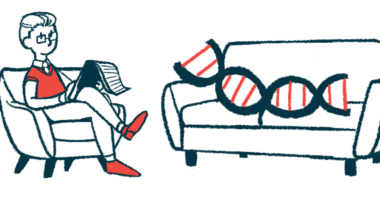A sea turtle rescue center reminds us to help others thrive
A visit to the Georgia Sea Turtle Center offers wisdom beyond aquatic animals

One of my favorite discoveries during my family’s recent vacation on St. Simons Island was the Georgia Sea Turtle Center on neighboring Jekyll Island. The center rehabilitates sea turtles and local wildlife in need of medical care so they can be released back into their natural habitats. They also welcome visitors to come and see these efforts in action and learn about the turtles, how to help with conservation, and how to become better stewards of the waterways we share with these creatures.
During our visit, we observed about a dozen turtles receiving treatment for various conditions like cold shock, malnourishment, and injuries. From an elevated platform, guests can watch the patients swimming, splashing, being fed, and receiving care. Staff members regularly give short presentations about their current residents while providing education and demonstrations of the care they require.
A story about a particular turtle reminded me of my own life with SMA. Learning about her generated an immediate connection that made her feel like a kindred spirit.
Meet Bandit
In the back corner of the room, there was a tank surrounded by a splash guard. This is where Bandit, a female green sea turtle, currently lives. She’s generally the most active patient at the center, which necessitates the splash guard. Otherwise, she’ll soak the staff and visitors with her energetic paddling.
Knowing this might make Bandit’s reason for being there surprising. Her rear flippers are paralyzed as a result of a spinal cord injury that occurred when she was accidentally struck by a boat.
Her disability doesn’t seem to have slowed her down, though. She’ll always be dependent on people, but her caretakers report that Bandit has recovered remarkably well. They say her story is one of strength and resilience.
Since she can’t survive in the wild anymore, the Georgia Sea Turtle Center is looking for a permanent home for Bandit in an aquarium or other facility that can appropriately continue her care long term. That includes regular physical therapy. As I watched Bandit, a staff member explained to the crowd that the black patch on the turtle’s back — which I’d mistaken for a bandage — was a bag of weights. This tool helps Bandit gain strength, work on her balance, and learn how to swim effectively with just two functional flippers.
Caring for turtles and SMA patients
I have an idea of what physical therapy might feel like for Bandit. It’s a common component of care plans for SMA patients, too. My routine has been adapted many times throughout my life to account for current needs, abilities, and disease progression, but the goal is always to maintain and maximize whatever level of function and mobility I still possess.
For me, that involves more passive stretching than weight lifting, but I imagine Bandit and I both experience some sense of invigoration and satisfaction (and some tiredness) upon finishing our exercises.
Commonalities between me and Bandit don’t stop there, either. Although I’m not paralyzed, SMA can cause similar symptoms, and I’m also dependent on people who care for me. Without my mom, nurses, and medical team, my care and quality of life would drastically decrease. I need their help to get out of bed, use the bathroom, provide nutrition, administer breathing treatments and medication, complete activities of daily living, and everything else my atrophied body can’t do on its own.
Unlike Bandit, however, this support isn’t given because I’m unable to survive in my natural habitat. It’s actually what enables me to stay in my home and live an active, fulfilling life of my choosing within my community.
Bandit and I need a lot of help to meet needs we can’t sustain on our own, but thankfully, neither of us are alone in this world. We each have people who love us and continually show up to protect and foster our health, happiness, and well-being, alongside us.
Making an impact
“Our hope is to not only help this charismatic species survive but to watch it thrive. And you can make a direct impact,” says Georgia Sea Turtle Center founder Terry Norton. From sea turtles to humans, and everything in between, isn’t that what we should do with all living things?
Bandit has certainly left a mark on me, and I like to think I’m doing the same for her by writing this story. The act of caring for another is one of the most powerful ways to make an impact and help people — or sea turtles — thrive.
For those of us with physical limitations, it’s often expressed by an outpouring from our hearts into our words, however we’re able to communicate them. For others, caring is a very literal act. I’m forever grateful for those people and their profound influence on my life. I’m sure Bandit is grateful for those who care for her, too.
Note: SMA News Today is strictly a news and information website about the disease. It does not provide medical advice, diagnosis, or treatment. This content is not intended to be a substitute for professional medical advice, diagnosis, or treatment. Always seek the advice of your physician or other qualified health provider with any questions you may have regarding a medical condition. Never disregard professional medical advice or delay in seeking it because of something you have read on this website. The opinions expressed in this column are not those of SMA News Today or its parent company, BioNews, and are intended to spark discussion about issues pertaining to spinal muscular atrophy.









Comments